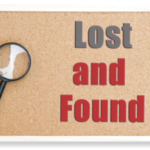The investigative group observed that the protein TREX1 can translocate from the ER in the cytoplasm to the nucleus at the time of DNA synthesis for replication. Fibroblasts from TREX1-null mice did not progress normally through the cell cycle, however, and proliferated slowly. Furthermore, TREX1 deficient cells failed to arrest properly in S and G2/M-phases of the cell cycle following DNA damage with irradiation. Molecular dissection of the checkpoints in the cell cycle associated with DNA damage repair indicated that the TREX1-deficient cells exhibited chronic activity of the ataxia-telangiectasia mutated (ATM) kinase, resulting in lower CHK2 levels and increased levels of active p53 and p21.
As TREX1 was previously described to use ssDNA as a substrate, the researchers hypothesized that loss of TREX1 activity could result in ssDNA accumulation. Indeed, TREX1-null fibroblasts exhibited a marked increase in the amount of ssDNA polynucleotides between 60 and 65 bases. Surprisingly, the accumulation was not in the nucleus, but in the cytoplasm. Using fluorescent microscopy they demonstrated—by co-localization with an ER-specific marker, calreticulin, that the ssDNA is associated with the ER. Experiments with primary fibroblasts from AGS patients with homozygous mutations in Trex1 demonstrated a similar cell cycle profile as the murine cells and an increase in ER-associated ssDNA.
From these studies, it appears that TREX1-deficiency results in chronic activation of the ATM kinase–dependent checkpoint and the accumulation of ssDNA oligonucleoides within the cytoplasm of replicating cells. Despite the aberrant cell cycle and checkpoint activity, mice that lack TREX1 and AGS-affected individuals do not have an increased tumor incidence. Rather, the hallmark of AGS is the presence of elevated levels of interferon-α in the CSF, mimicking congenital infections (pseudo-TORCH syndrome). Aberrant immune activation is also indicated by the chilblain lesions and the small number of AGS-affected children who develop antinuclear antibodies, hypothyroidism, and type I diabetes.3 Innate immune receptors, including the Toll-like receptors, recognize strands of nucleic acids as ligands, but have not been identified as a specific pathway for the interferon-α production in the pathogenesis of AGS.6
An alternative mechanism for the effects of TREX deficiency on autoimmunity concerns its role in cell death. TREX1 activity has been implicated in a specific caspase-independent cell-death pathway utilized by cytotoxic T lymphocytes (CTL) and natural killer (NK) cells during antiviral responses.7 Type I interferons stimulate the activity of these cells. In turn they release granzymes and perforin to induce death in target cells. Defective granzyme A activity as a result of Trex1 deficiency could result in the inability to eliminate autoreactive lymphocytes. Alternatively, genetic defects in perforin have resulted in sustained cytokine production by NK cells and CTLs, which may occur in AGS.8 The identification of the malfunctioning proteins in AGS provides evidence that a defect in DNA processing can lead to chronic expression of inflammatory cytokines, including interferon-α and autoimmunity. As often occurs in science, insights into disease can come from unexpected places and it is intriguing that a study of a relatively rare neurological disease may enhance our understanding of more global mechanisms underlying autoimmunity.
References
- Aicardi J, Goutières F. A progressive familial encephalopathy in infancy with calcifications of the basal ganglia and chronic cerebrospinal fluid lymphocytosis. Ann Neurol. 1984;15:49-54.
- Crow YJ, Hayward BE, Parmar R, et al. Mutations in the gene encoding the 3’-5’ DNA exonuclease TREX1 cause Aicardi-Goutières syndrome at the AGS1 locus. Nat Genet. 2006;38:917-920.
- Rice G, Patrick T, Parmar R, et al. Clinical and molecular phenotype of Aicardi-Goutieres syndrome. Am J Hum Genet. 2007;81:713-725.
- Crow YJ, Leitch A, Hayward BE, et al. Mutations in genes encoding ribonuclease H2 subunits cause Aicardi-Goutières syndrome and mimic congenital viral brain infection. Nat Genet. 2006;38:910-916.
- Lee-Kirsch MA, Gong M, Chowdhury D, et al. Mutations in the gene encoding the 3’-5’ DNA exonuclease TREX1 are associated with systemic lupus erythematosus. Nat Genet. 2007;39:1065-1067.
- Kawai T, Akira S. Innate immune recognition of viral infection. Nat Immunol. 2006;7:131-137.
- Chowdhury D, Beresford PJ, Zhu P, et al. The exonuclease TREX1 is in the SET complex and acts in concert with NM23-H1 to degrade DNA during granzyme A-mediated cell death. Mol Cell. 2006;23:133-142.
- Marcenaro S, Gallo F, Martini S, et al. Analysis of natural killer-cell function in familial hemophagocytic lymphohistiocytosis (FHL). Blood. 2006;108:2316-2323.
